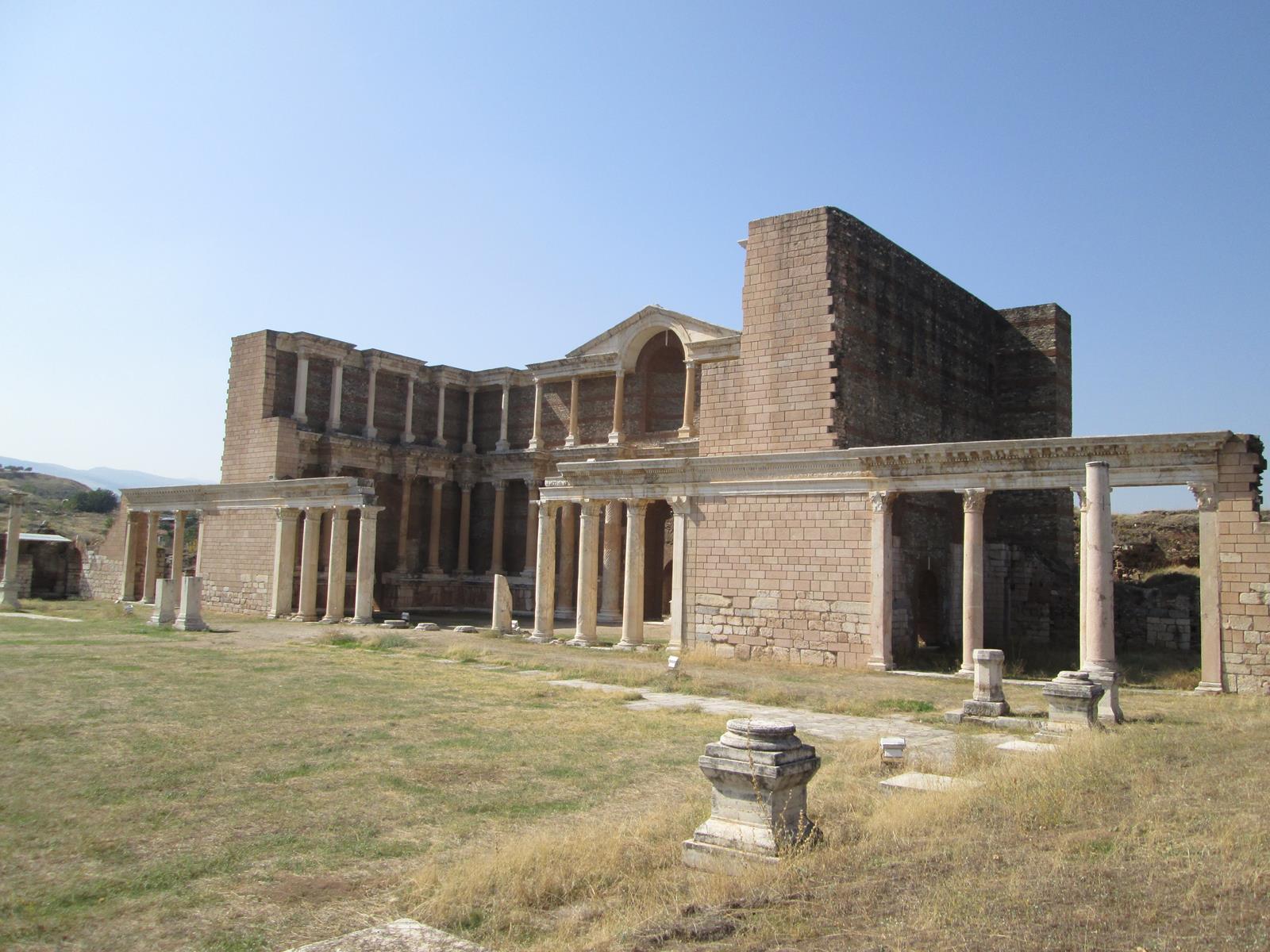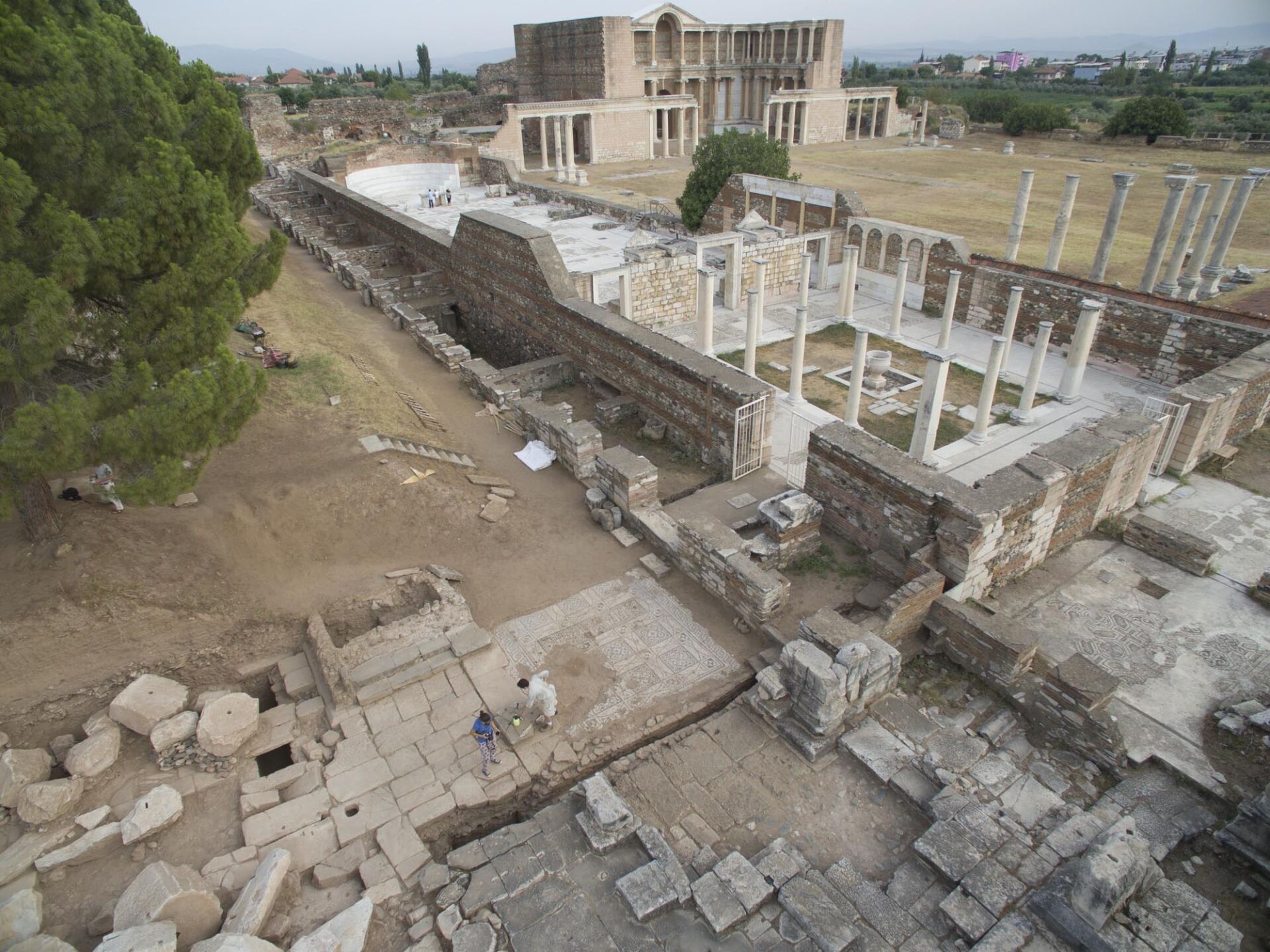Have you ever flipped a coin and wondered where the journey of that small piece of metal began? That journey started right here in Salihli, Manisa, in the capital of one of history's wealthiest kingdoms. This is not just a ruin of stone and marble; it is the very land where a revolution that forever changed the global economy was born. In this article, we have prepared a guide that will take you far beyond a simple list of things to do in the Ancient City of Sardis, offering a veritable journey through time.
Moreover, there couldn't be a better time for your visit! The Ancient City of Sardis and the adjacent Bintepeler Lydian Tumuli were recently inscribed on the UNESCO World Heritage List, officially recognizing them as a shared treasure of all humanity. So, fasten your seatbelts, because visiting Sardis is like peeling back the layers of a historical cake. The unshakable power of Lydia, the dazzling splendor of Rome, and a rich cultural mosaic where different beliefs flourished together await you.
Explore the Capital of the Lydian Kingdom, Where Money Was First Minted
When you step into Sardis, you arrive in the capital of the powerful Lydian Kingdom, which dominated Western Anatolia from around 1200 BC. The wealth of this city was so legendary that the phrase as rich as Croesus has been passed down through the ages to the present day. The source of this wealth was the gold extracted from the Pactolus (Sart) River flowing right beside it, the subject of the King Midas legend.
However, what truly wrote the Lydians into history was their ingenious use of this gold. They recognized the difficulties of trade, which until then relied on barter or ingots that had to be weighed for every transaction. As a solution, they produced small metal discs whose value and purity were guaranteed by the state, stamped with the kingdom's seal (usually a lion's head). These coins, made from a natural gold and silver alloy called electrum, were the first currency in history. This invention not only facilitated trade but also sparked an economic revolution that multiplied the state's power and wealth. The Lydians' invention truly changed commerce forever.
This revolutionary invention turned Sardis into the New York of the ancient world and fundamentally transformed trade with other major centers in the Aegean. Just like other ancient cities of the Aegean, Sardis was adorned with monumental structures thanks to this wealth. You can still see the evidence of the incredible riches and power brought by money today. The massive Lydian walls surrounding the city, reaching a thickness of 20 meters in some places, are not just a defensive line but a declaration of this wealth set in stone. A short distance away, Bintepeler, one of the world's largest tumuli fields, rises as the eternal resting place of the Lydian kings who controlled this fortune.

Walk Through the Restored Gymnasium and Along the Marble Road
Even after the Lydian Kingdom faded from the stage of history, Sardis maintained its importance during the Roman Empire and took on a new identity. The most magnificent trace of this period is the massive Bath-Gymnasium complex that greets you at the entrance. In ancient Rome, a gymnasium was not just a place for sports but a vibrant social center where people met, conversed, debated philosophy, and made business deals.
The complex's restored two-story monumental entrance, the Marble Court, will instantly captivate you. The finely crafted column capitals, the inscriptions on the walls, and the sheer grandeur of the structure showcase Rome's architectural genius and the splendor of urban life. If you pause here for a moment and close your eyes, you can almost hear the voices of toga-clad Romans echoing on the marble floors.
After the Gymnasium, take a stroll down the Marble Road, the city's main artery. This road was once a bustling commercial center lined with shops on both sides. As you walk, look closely at the marble slabs beneath your feet. You will notice the deep ruts carved by the wheels of thousands of years of chariots and caravans. You might even spot ancient graffiti carved by a bored Sardian resident of that era. These small details offer much more than reading history from a book; they pull you directly into that moment in time.

Marvel at the Mosaics of One of the Ancient World's Largest Synagogues
One of the most impressive stops in the layered history of Sardis is the monumental Synagogue, located right next to the Gymnasium complex. This structure is not just a house of worship but also a crucial social document. With a capacity to accommodate about a thousand people, it is one of the largest synagogues to have survived from the ancient world. Its most surprising feature is its location. It was not built on the outskirts of the city but right in its heart, converted from a Roman public building (likely a basilica). This fact is a quiet but powerful testament to how large, wealthy, and integrated the Jewish community of Sardis was in city life.
Upon entering, you are greeted by what can only be described as a stone carpet. The floor is adorned with dazzling geometric mosaics covering an area of over 1400 square meters. It's a special delight to search for details among these mosaics, such as vases, birds, and peacock figures symbolizing paradise. The Greek inscriptions within the mosaic panels allow you to form an even more personal connection. These inscriptions contain the names of the community members who funded that section of the mosaic. In other words, the patterns you are looking at carry the memory of real people who lived thousands of years ago.
One of the most touching stories of this heritage is happening today. The restoration of these priceless mosaics, damaged over time, is being carried out with great care by local women from the nearby Sart village. The legacy left by the masters of antiquity being carried into the future by the patient hands of today's women is the most beautiful example of the living spirit of Sardis. This cultural richness in Sardis is one of the finest proofs of the deep history hosted by Manisa and its surroundings.

Alternative Places to Visit Nearby While You're Here
If you wish to continue your tour after being enchanted by Sardis, Salihli and its surroundings offer wonderful options:
Kula-Salihli UNESCO Global Geopark: In this region, which ancient geographers called the Burnt Land, you can walk among extinct volcanic cones, see basalt lava flows, and explore the unique nature of Turkey's first and only UNESCO geopark.
Historic Kula Houses: After the ancient texture of Sardis, take a different journey through time in Kula, a typical Ottoman town with its narrow streets and wooden houses with bay windows. These charming houses are a paradise for photography enthusiasts.
Spil Mountain National Park: If you want to escape into nature, Spil Mountain, the symbol of Manisa, awaits you. Here you can hike, see the legendary Weeping Rock (Niobe Rock), and enjoy the magnificent view from the observation terraces.
Bibliography: For more academic and official information on the global historical importance of Sardis, you can consult the relevant page of the UNESCO World Heritage Centre: (https://whc.unesco.org/en/list/1731)
Frequently Asked Questions (FAQ)
1. How do I get to Sardis Ancient City, and what are the entrance fees and visiting hours? Sardis Ancient City is located in the Salihli district of Manisa, on the İzmir-Ankara highway, making it very easy to reach. Visiting hours vary between summer and winter seasons; it is generally open from 08:00-19:00 in the summer and 08:00-17:00 in the winter. The MüzeKart is valid. However, since entrance fees and hours can be updated, we recommend checking the most current information on the official website of the T.R. Ministry of Culture and Tourism, muze.gov.tr, before your visit.
2. How much time should I set aside to fully explore Sardis? Sardis consists of two main sections: the main area with the Gymnasium and Synagogue, and the Temple of Artemis, which is about 2 km away. We recommend setting aside at least 3-4 hours to properly explore both sections, take photos, and soak in the atmosphere.
3. What makes Sardis Ancient City interesting for children? The story of it being the place where money was invented, running among the giant columns, searching for chariot wheel tracks on the Marble Road, and trying to find animal figures in the synagogue's mosaics can be a great adventure for children. The city's wide-open spaces are also ideal for them to burn off energy.


 English
English Türkçe
Türkçe